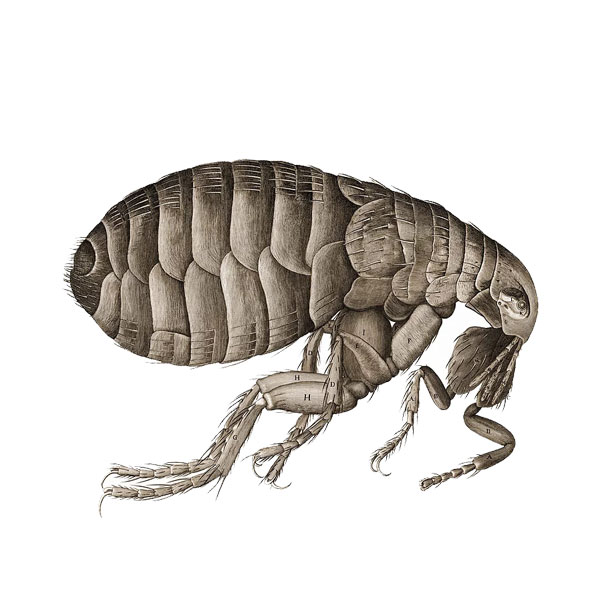Flea Control
Fleas bite to obtain blood for their diet. The bites can itch and become painful or worse if infection occurs. Some diseases are transmitted by flea bites.
Description: Adults about 1/8″ long. Body is laterally flattened (side to side). Brownish black to black, but reddish black when engorged with blood.
Habits: Fleas can jump about 6″ so they can be transported on shoes, trousers, animals, etc. Can remain in the pupal stage for many months without food or water and hence can be present in large numbers even though there has not been a host present. They are most often found where pets and other animals spend most of their time. They prefer areas with high moisture, though. They can be found indoors or out, but need humidities between 45% and 95%, and temperatures between 55 and 95 degrees. Adult fleas tend to stay on the host to feed, mate, and lay eggs unless they are dislodged.
Lifestyle and Reproduction: Females lay 4-8 eggs after each blood meal laying 400-500 eggs during their lifetime. Eggs are laid between the hairs of the host and fall off or are shaken off landing an area that also contains dried blood from bite scabs and flea feces. the eggs hatch in 1-12 days. Larvae must feed off the blood meal nearby to fully develop. They next develop into a pupal stage which is a virtually impermeable cocoon. Not even pesticides can affect them in this state.They emerge from the cocoon when pressure is put on it, there is a sudden change in humidity, or even vibration can start the process. They seek a blood meal immediately upon hatching, but can survive for a while on stored body fat. Longevity may be from a few days up to a year depending on the availability of a host and conditions on the host.
Problems Encountered: Fleas bite to obtain blood for their diet. The bites can itch and become painful or worse if infection occurs. Some diseases are transmitted by flea bites, including bubonic plague.
Tips for Prevention: Pets should be groomed regularly. Several products on the market today are very effective in controlling fleas on pets. They include topical ointments, pills, and flea dips. Areas where pets are at rest should be cleaned and vacccumed thoroughly and often. Particular attention should be paid to the summer months. Don’t neglect cracks and crevices near the areas a pet spends most of its time. A professional service can gain control over fleas with modern, effective products and will also give helpful advice to minimize future flea problems.


Flea activity will be most pronounced where pets spend most of their time. Please inform the techncian where your pet(s) tend to rest or spend most of their time. You’ll need to prepare and maintain your property and pets to control fleas.
Preparation:
1. Carpets and upholstered furniture should be vaccumed thoroughly before treatment, then vacuumed frequently following treatment beginning the next day for a period of at least two weeks.
2. Pets should be removed from the premises until it is safe to return (generally within three hours).
3. Pumps to aquariums should be turned off and the aquarium covered.
4. Dogs and/or cats should be “dipped” and treated with a designated flea control product such as “Advantage”.
5. Premises will need to be vacated until the material is dry. The technician will give an approximate return time which will generally be within three hours following treatment.
6. If the yard is treated, please ensure that all toys, dog food, or other items that may be handled or ingested are removed or covered. Also, please be sure that grass is trimmed for maximum effectiveness.

